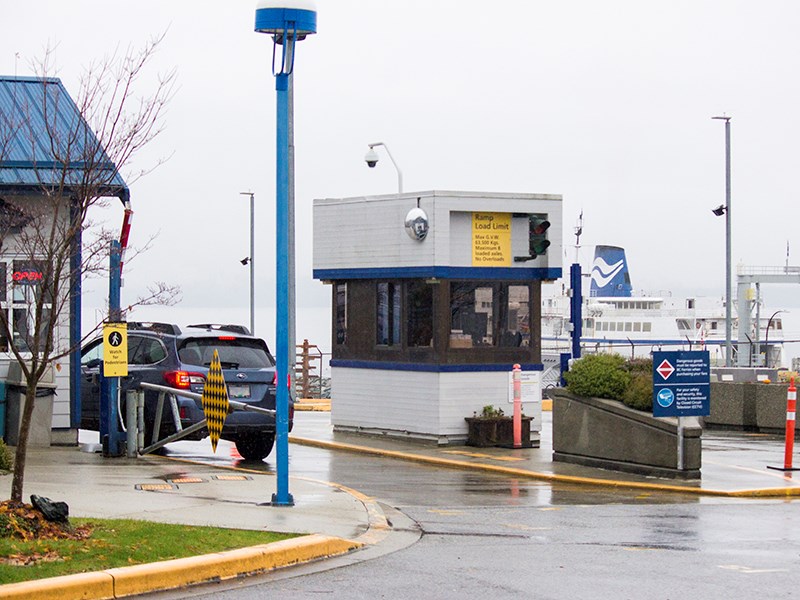With another ferry fare increase on the horizon in April, a working group of regional-district directors from BC’s coastal communities will be meeting regularly in hopes of getting answers to their questions regarding BC Ferries service.
The working group includes 12 regional-district directors, including the Sunshine Coast, Haida Gwaii and Vancouver Island.
Powell River Regional District Electoral Area C director Colin Palmer, who is part of the group, said he first began gathering with other regional-district directors after he was set to meet with former minister of transportation Blair Lekstrom in 2011.
At that time, Palmer invited other regional-district directors to join him for the meeting, and at least 10 others were part of the discussion that brought forward the concerns of their communities.
“We sat down with the minister and he was facing recommendations at that time from the ferry commissioner that there should be eight per cent increases in the fares for a three-year period,” said Palmer. “He eventually rearranged it so the increases were four per cent a year, as opposed to eight per cent.”
Palmer said in the past directors met yearly with the minister of transportation. They have also met with the premier of BC and provincial ferries commissioner.
Palmer said the working group is hoping to get answers to several questions in future meetings, including concerns around fare increases and replacement vessels.
“We want to know why is the debt loaded into the ferry system, which means ferry fares,” he said. “They are running around saying we will have three new ferries in the system at the end of the year, including the replacement for Queen of Burnaby, but they aren’t mentioning that debt will be paid for through ferry fares and those who use the ferries.”
Unlike construction of highways or bridges, where debt goes to the government financing authority and is paid in taxes by all BC residents, Palmer said BC Ferries debt is paid for via fares by those who use the ferries.
Palmer also said the working group wants answers about the results of reduced fares for November and December.
“What was the economic benefit of that?” he said. “Did it increase the traffic and did BC Ferries lose money?”
Minister of transportation and infrastructure Todd Stone said the BC government and BC Ferries have worked hard over the past four years to address concerns about fare affordability for ferry users.
“Our strategies are paying off, with the annual fare increases for each of the next four years, starting April 1 of this year, at just 1.9 per cent, consistent with the long-term inflation rate,” said Stone. “The BC government is aware of the importance of an affordable, efficient and sustainable ferry service to our coastal communities.”
Palmer said the working group is also concerned about the lack of replacement vessels in the ferry system, which recently caused problems for residents when the Queen of Burnaby was out of service in January.
Stone said in addition to replacing the Queen of Burnaby on the Comox to Powell River route by the end of the year, there will be a new vessel available to provide relief in the off-peak season when other vessels are being refit or in need of repair.



